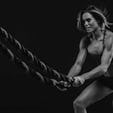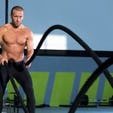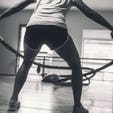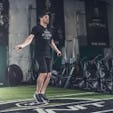As far back as 3500 to 4000 B.C. in ancient Egypt, humans have used rope to improve their quality of life – helping to pull, haul, carry, drive, push, and lift people, vehicles, and equipment.
Revered as one of the greatest inventions of its time, it’s still in use today as a prominent implement for the same uses. Only recently have ropes become a direct way to improve someone’s quality of life through human optimization both physically and mentally.
John Brookfield was the first to implement ropes into the human physical training methodology. Since his incredible impact in the fitness community, ropes have been found in almost every fitness center around the world.
However, most people do not know how to use this tool to produce human optimization efficiently. The following information will provide a sound basis for the trainer, coach, and student to use the Onnit Battle Ropes efficiently.
5 Benefits of Battle Ropes Training
#1. Ropes Provide a Dual-force Dynamic Effect to Improve Physiological Response
Ropes are significant in that they create a dual-force dynamic effect, one that uses the force of gravity and the force created by rope waves to amplify and improve all of the human systems physiological response.
Most of the implements people use today increase the effects of gravity on the body, creating a physiological response in the systems the trainer, student, or person is trying to improve or build adaptations.
For instance, if a body builder is trying to grow adaptations in his or her musculature, he or she will create moderate to excessive load on the musculature (as well as cardiovascular, pulmonary, and nervous systems) day after day and week after week using gravity-based implements (i.e. barbell, dumbbell, etc.), and it works.
If a runner is trying to improve his aerobic capacity or endurance, he will run (gravity-based load and exercise) day after day and/or week after week to build adaptations in the muscular, cardiovascular, pulmonary, and nervous systems to improve aerobic capacity/endurance.
In this way, ropes are significantly different. The coach, student, or person is able to amplify load in two directions: gravity (and the many ways we know how to leverage gravity because of the lifters, coaches, and trainers that came before us) and wave force (which is a new field of physiological pursuit, providing myriad ways to improve our body’s adaptation response).
#2. Less Injuries and More Results
The dual-force effect and contralateral movement common to rope use can accelerate adaptation in the body, while curbing injuries because each person is limited by their own force production.
Much like jumping, if we cannot create enough force to get off the ground, or our nervous development disallows proper timing and sequencing for us to get off the ground, it will be hard to get injured.
We cannot create enough force through jumping or landing to be injured (note: most people injure themselves landing in the jump sequencing, because their focus is only on the first part of the movement–the jump, but that is a topic for another time).
With battle ropes, it is far less detrimental, because there is a constant connection to the two force producers (rarely in battle ropes training is the athlete off of the ground or disconnecting the chain of force and then reconnecting with it at high level forces), and it can be as explosive or dynamic as the athlete is able to produce force, thus creating the opportunity to grow endurance, strength, power, and skill without a ceiling.
Whereas if an athlete runs out of an external load such as dumbbells to provide the adaptation effect, you would have to purchase another dumbbell with a higher load, or figure out a way to leverage gravity in an increasing way. This will hardly be a problem with the ropes as the force is self-inflicted.
#3. Making Weak Body Parts Strong
Through the dual-force dynamic the areas, which tend to be weak, are strengthened: your grip, shoulders, core, hips, knees, feet, ankles, and mind. Your grip strength and grip endurance must increase as your ability to produce higher force in your waves increase.
Just like loading up more weight on a barbell, as your waves increase in size, speed, distance, or duration, they increase the force through the rope, requiring a stronger grip in order to not let the rope slip out of your hands.
The shoulders should stay in a fairly “packed” position, with your elbows lower than your shoulders, and tight to the sides of the body when first starting with rope waves (it should go without saying that the athlete will have neutral spine and the shoulders down and back – think big chest), this not only prevents injury, but it does wonders for the shoulder strength and stability. Innovative Results has been known to use the ropes as a way to prehab and rehab shoulders back to their fully optimized state.
The core (or torso to include shoulders and hips) is mobilized, stabilized, and strengthened through repetitive rotation and anti-rotation involved in the basic battle rope alternate wave. This is a contralateral movement (left lower limb moves in sequence with the right upper limb and vice versa), which is how the body works when walking, running, crawling, swimming, and cycling, only instead of just a gravitational load, the body experiences the load of the wave as well.
This is how the hips are strengthened as well. The hips can also be strengthened in all other planes of motion through changing the way the wave is produced. The knees, foot, and ankle are strengthened because the body is working with gravity to leverage wave output through the upper body (torso, shoulders, and arms).
Every wave produced from the upper body, has been a chain of movement that uses our body’s relationship with gravity and the ground through the foot, ankle, knees, and hips. Just like a punch, the athlete creates a timed sequence to produce a force through the rope to where the rope is connected to an anchor.
All of these body improvements in the weak areas produce a more confident, healthy, and tough mind (toughness will be generated by pursuing higher volume, or power –greater single wave output, which is simple, but simple is not easy).
#4. Mobility
As in all areas of fitness mobility must come before stability, and stability before endurance, strength, and power. Any mobility sequence from Onnit or Innovative Results will suffice, but the athlete should focus on the above weak areas. As the mobility in the grip, shoulders, core, hips, knees, foot, and ankle increase, the athlete will see a dramatic improvement in his or her performance.
Start the training session with dynamic mobility (stretching through movement), and end the sessions with either more dynamic mobility or static mobility (stretching in one position for a prolonged time).
#5. Stability
Whether you are creating waves, pulling the ropes, or lifting the ropes stability is generated. Think of the ancient sailor on a ship, pulling, lifting, wrapping, and tying ropes (they are actually referred to as “lines”) all around the ship as a means to an end. You probably are not thinking of an unstable, off-balance character.
Through these repetitive movements, the sailor becomes very stable and very strong, in both his lower body and his upper body. We experience this same level of stability as we continually put the dual-force dynamic through all of our physiological systems (nervous, cardiovascular, pulmonary, and musculo-skeletal).
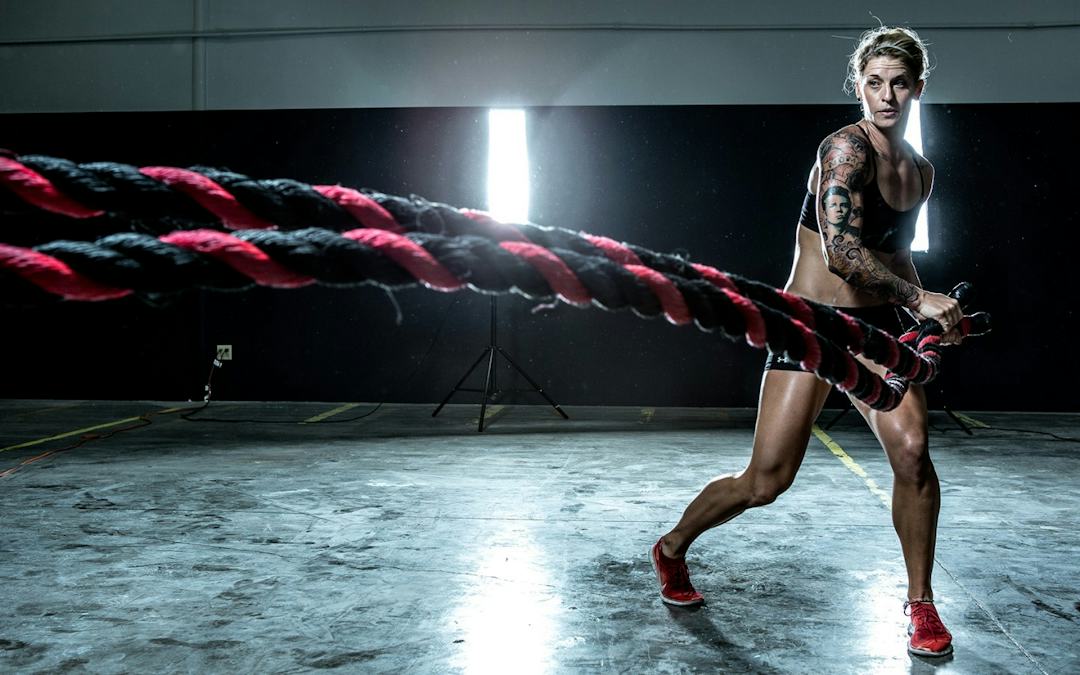
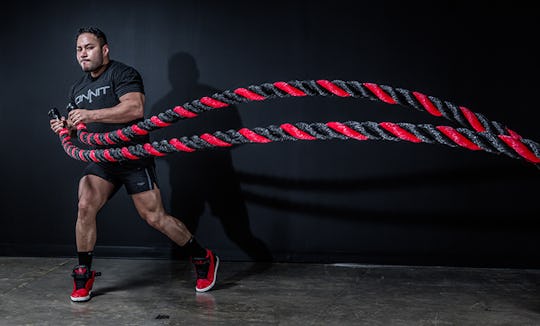
)
